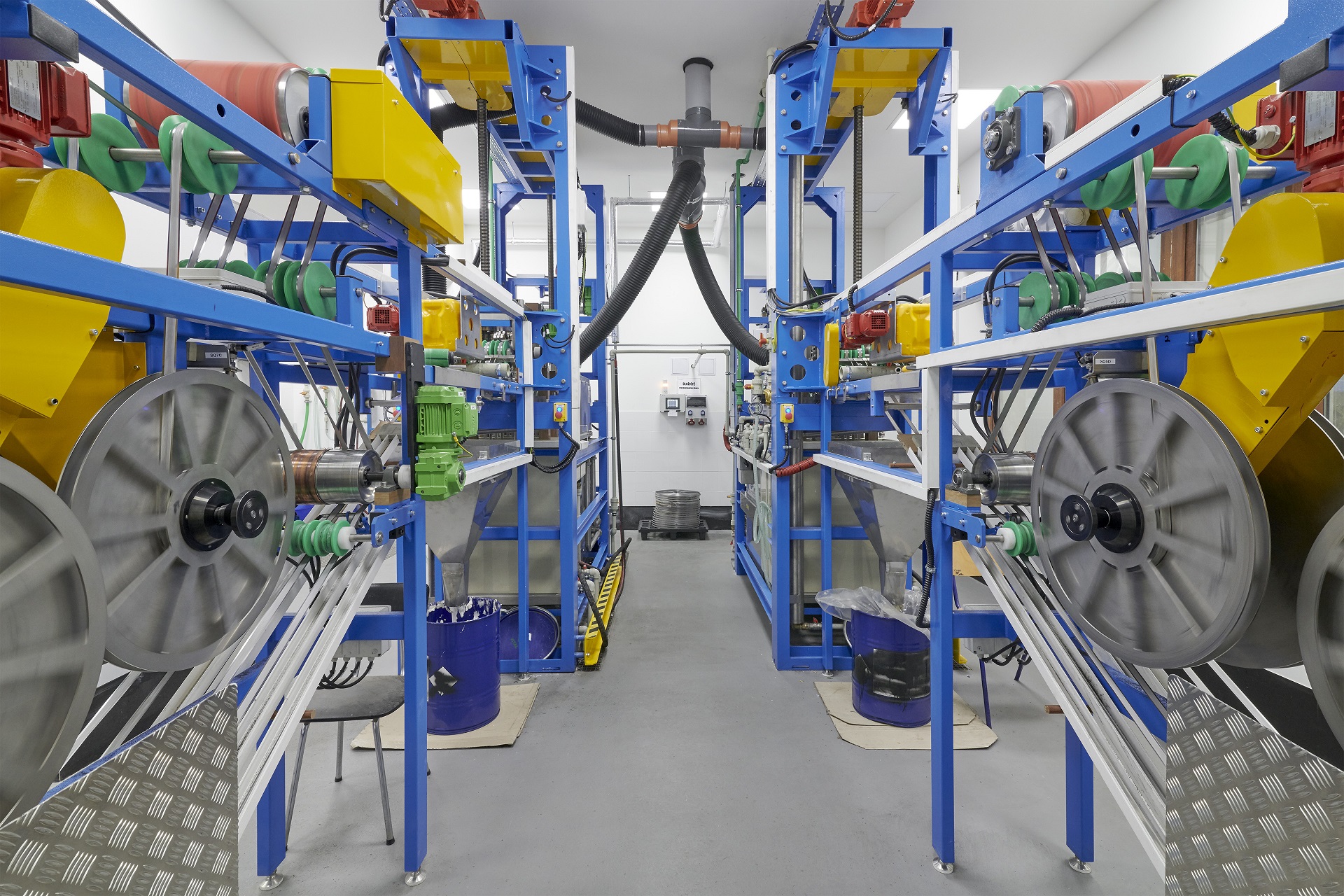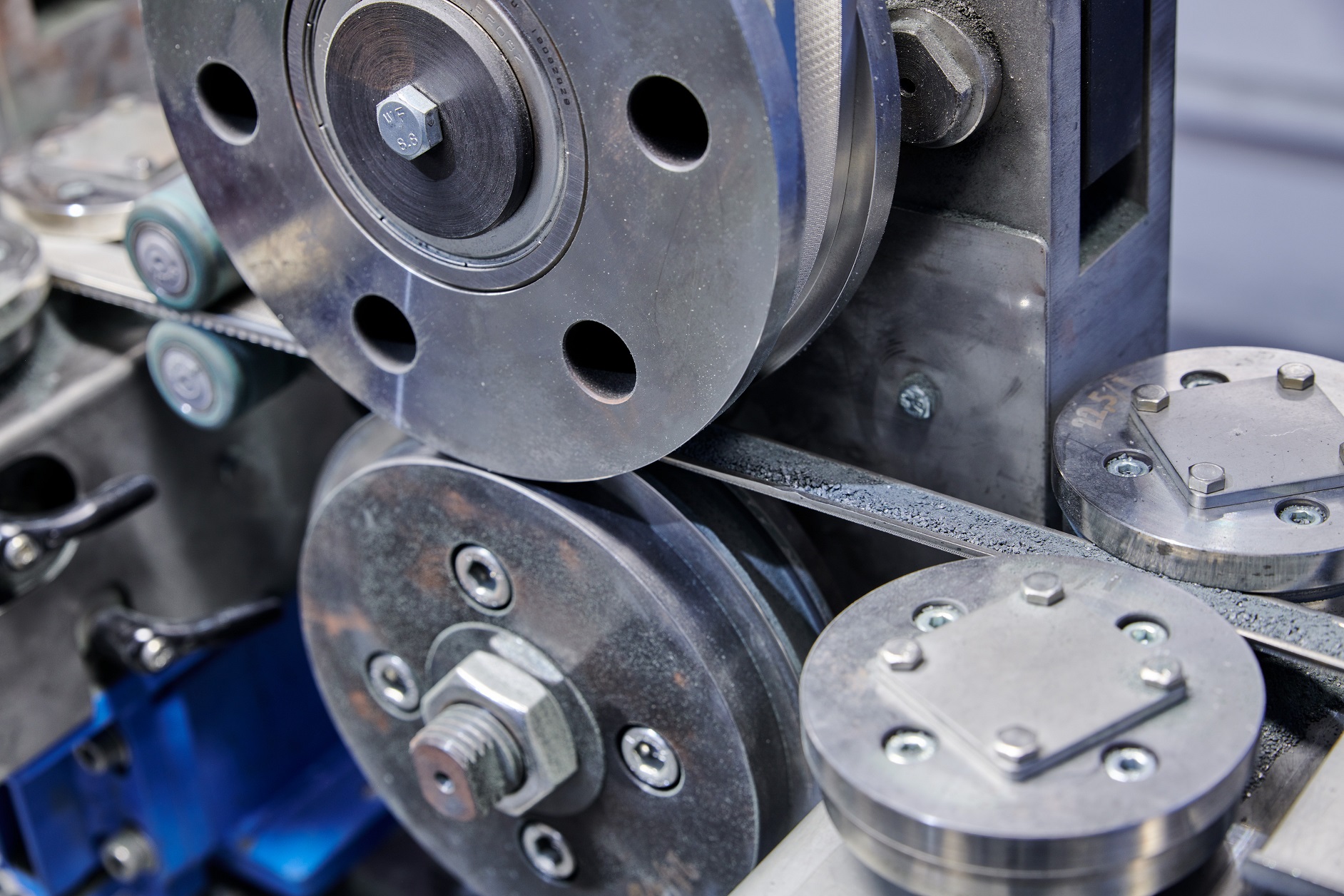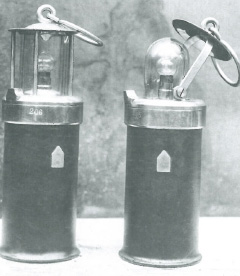The procedure is the same for both the anode and the cathode, which of course contain different active material. The positive active mass is the size of instant coffee granules, while the negative mass most resembles grains of table salt. The rods are therefore treated before further processing to prevent spontaneous leakage of the mass from the electrodes.
The electrode of a modern Ni-Cd cell consists of several, say fifteen, of these lamellae, which the operator of the next machine stacks side by side, one face up, another face down, and so on. The locks on its edges snap into each other and join the slats into one wide strip. This then goes to a shearer, which cuts it to the required length, i.e. the width of the resulting electrode plate - its length is then determined by the number of lamellae. The machine weighs each plate for inspection before it drops out of the machine into a tray and can go on to assemble the entire cell.
Although the production of electrode plates can be fully automated, there are undeniable advantages in maintaining the human labor involved in the process. In fact, the operator can monitor the process very efficiently, given that careful inter-operational control of production significantly reduces the scrap rate. Thus, it rarely happens that the weighing of a finished plate reveals an inaccurately manufactured piece that has to be scrapped.
This article is part of a series of articles on Ni-Cd production, more of which can be found as links in the top right corner of this page.







